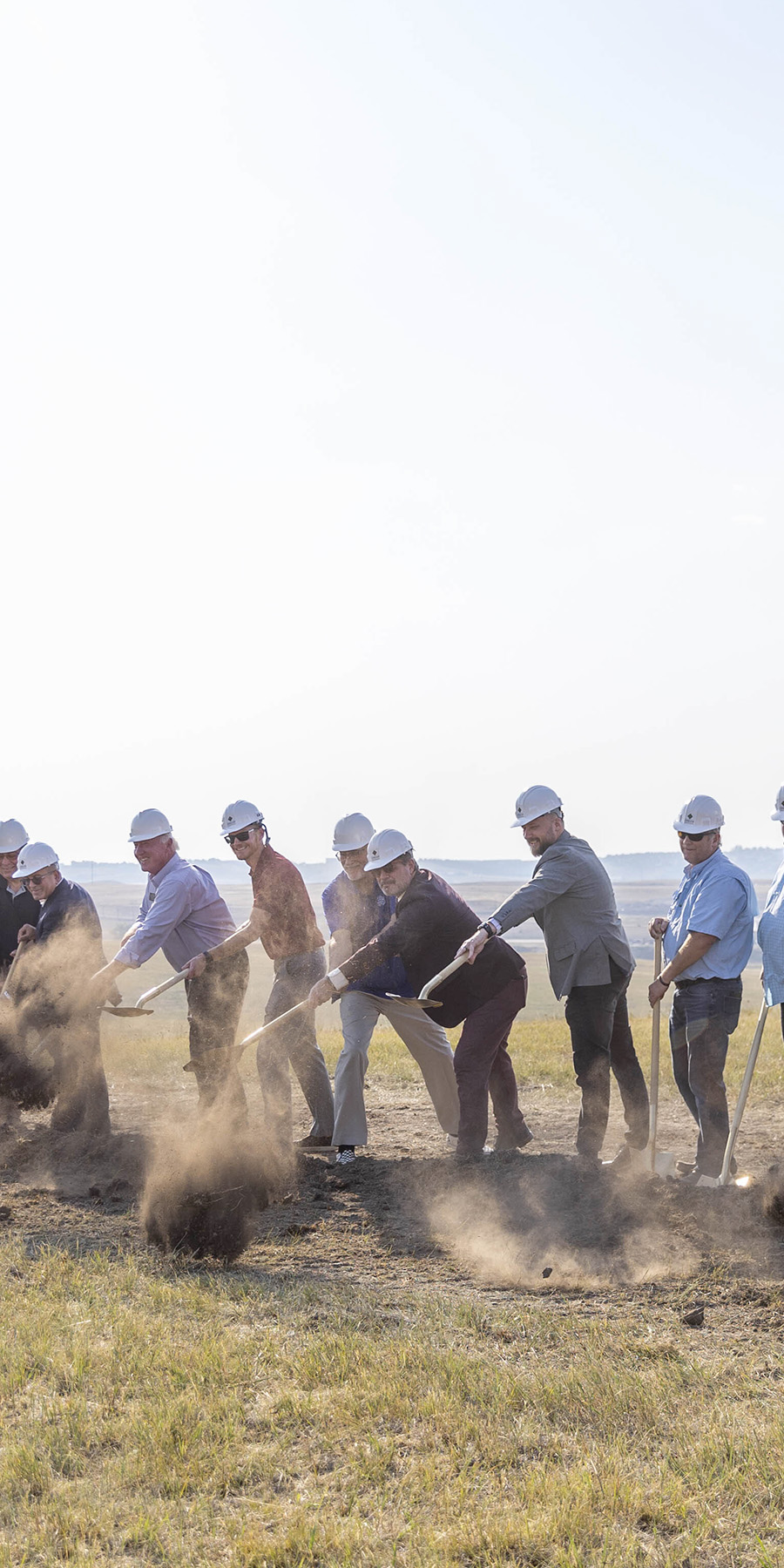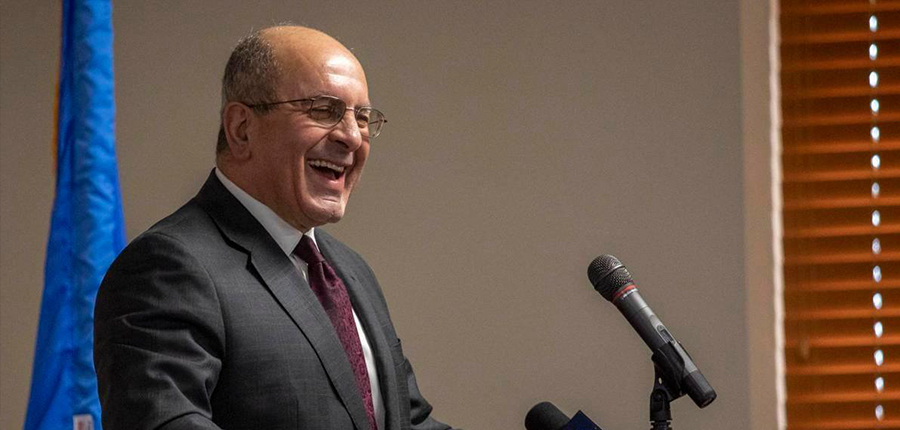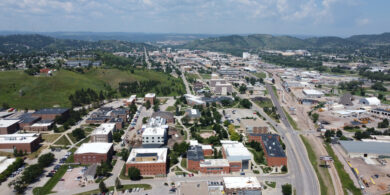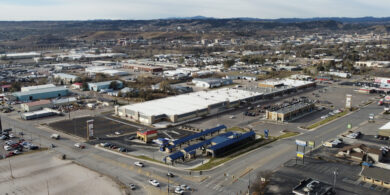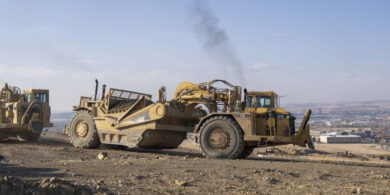Humble Beginnings: How Hani Got His Start in Real Estate Development
July 20, 2018When people hear of Hani Shafai, a lot of times their first reaction is that he must be the luckiest guy, he must have come into a lot of money, or he really had the biggest hand up to get him where he is today.
They know his name from hearing of him in the news as incoming developments work their way through Planning Commission meetings and City Council approvals. And, they see the Dream Design sign on what seems to be every corner in town as they’re out running errands, dropping off the kids, and grabbing their groceries.
But, as far as he’s come, those who really know Hani, know he’s had a long road to hoe. The truth of Hani’s story is anything but the easy street, easy ride variety. Instead, it’s a story of war, violence, instability, and a lot of really hard work, grit, and unbelievable vision.
In July of 2018, Darla Drew of Black Hills FACES highlighted Hani’s humble beginnings, sharing his story of having to leave his war-torn hometown in Gaza to head to the great unknown of the Black Hills of South Dakota. In the article, he talks about growing up in Gaza, working for $1.00 per hour when he got to the States, and how he eventually got his start in developing Rapid City’s real estate.
By Darla Drew Lerdal, Black Hills Faces Magazine Volume XIV, Issue 3
What comes to mind when you think of home? Friends, family, lush fruit trees, sumptuous vegetable gardens, horses, and goats? The Gaza Strip? The West Bank? Palestine? Probably not. It might be because you do not share the beautiful memories that Hani Shafai has of his home town of Beit Lahia, Palestine.
According to Wikipedia, “Beit Lahia is a frequent target of air strikes in Israel and has been a battlefield between Israel and the Palestinians.” Maybe this is where Hani gets his love of building and rebuilding, imagining, and re-imagining. He grew up in a place of constant yet pliable-some “must haves” if you grow-up in Palestine.
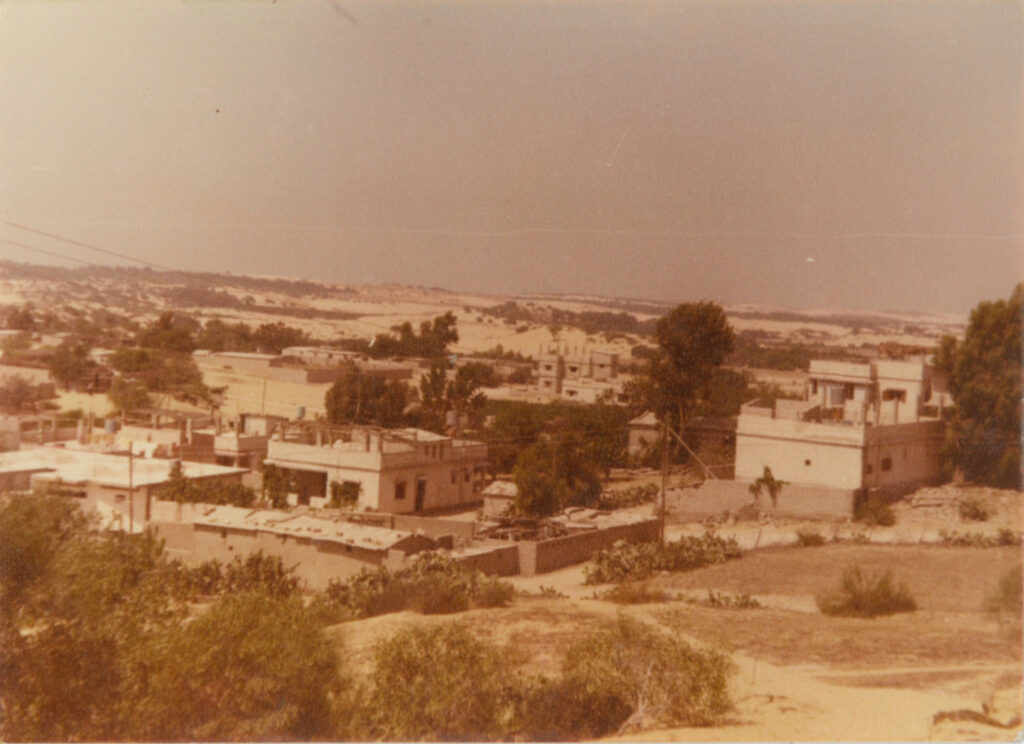
Hani is a well-known developer in Rapid City. He is recognized for his business acumen, his engineering skills, and his ability to envision building projects that expand our civic horizons. He can be seen around town on any given day, running from meeting to meeting and back to his office for work. And he loves to work. He says, “Finding an answer to a problem, that is where the fun is for me.”
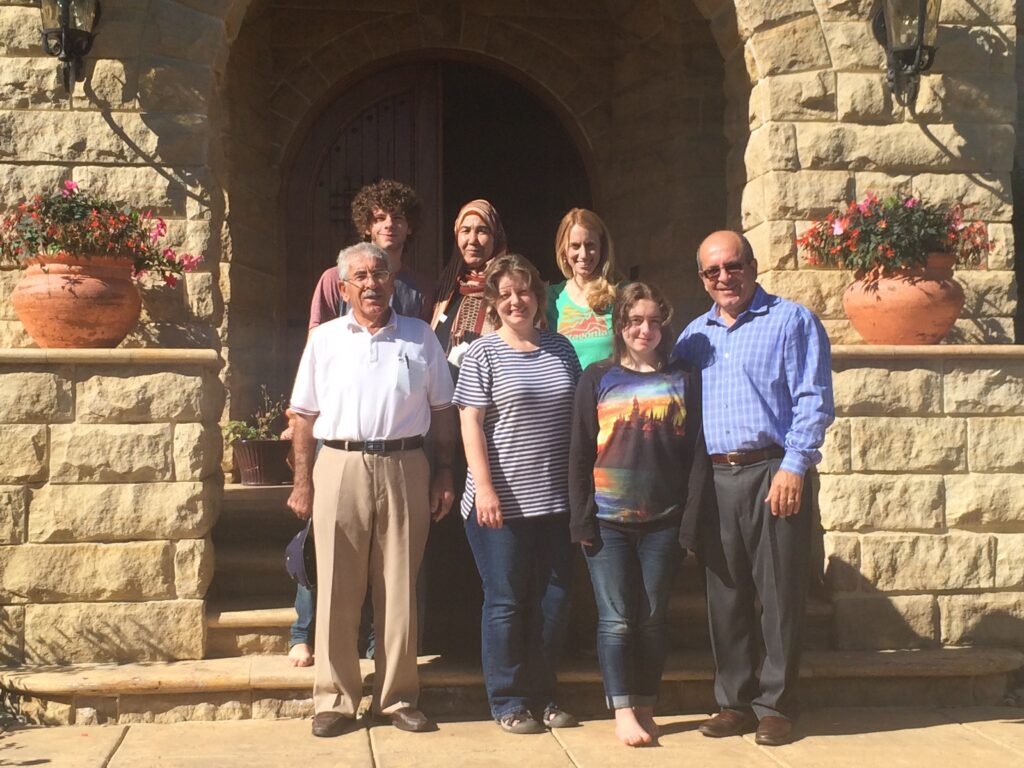
So how does a Palestinian boy end up in Western South Dakota? Hani’s family lived in a small village near the Mediterranean Sea. His village, Beit Lahia is located at the northern tip of the Gaza Strip. There were about 3,000 inhabitants and one car in the village when he was a boy. His father was a teacher and his mother stayed at home taking care of their six boys and five girls. The family lived on his grandfather’s land, tending goats, and raising fresh produce. Growing up in the village, the family had no running water, power, or phone until the early 1970s. The land had been in their family for centuries. He remembers brief periods of violence when he was young, but they would be followed by periods of calm.
As violence grew frequent after the state of Israel was given more control over Palestine Island, people driven out of their homes would flee up along the coast, often stopping in his village for rest and sustenance. A refugee camp was located not far from Hani’s village, and the entire region of the Gaza Strip experienced growth with the influx of nearly 750,000 refugees. Recently, Beit Lahia grew to nearly 100,000 due to re-settlement of some of the refugees from the nearby camp.
Hani’s parents and grandparents told his brothers and sisters stories of misplaced people and how they were obligated to take care of them. There had been a constant ebb and flow of refugees since the war of 1948. Sometimes, the displaced families might stay for weeks or longer, and these extended stays created bonds between families that have lasted for generations. To take care of others was not just a religious tenant for them, it was about the survival of other Palestinians. His mother was already cooking for a family of 13, so she would usually cook for 25 people, knowing that they would share food with anyone who would come by.
The world of Hani’s youth was filled with educators and educated people. His father’s love of learning imbued his son with the same love. In the mornings before he went off to school, his aunt taught him how to read, giving him an edge on his classmates. Religion and language classes were his least favorite subjects, but he excelled in math and science. When studying language on the Strip, students did not take classes in one language as they often do in the US. They studied Arabic, English and Hebrew beginning in 7th grade. Before the year of 1948, French was also a required language. Although his grandmother could not read, she spoke two foreign languages, English and French.
His grade school and middle school taught the boys and girls together, which was unusual for the region, but when the students start high school, they were divided by gender. Hani remembers his high school had about 3,000 male students. All the villages and refugee camps sent their sons to the same school.
At school, he studied Middle-Eastern, European, Asian, and other cultures. There was also no separation of Muslim and Christian kids at the school. There was no stopping for prayer, and personal religious preferences were not discussed. Acceptance of diversity is still a basic tenant in Hani’s life.
The Shafai’s did most of the usual family things. They took trips to the beach, which was only one mile away. However, as there were no cars, it was a long trip in a horse-drawn wagon. Another adventure that young Hani enjoyed was loading the cart with fruits and vegetables and riding with his grandparents into the market. They left early, sold their wares by 10 a.m., and usually shopped for family staples like flour, sugar, and tea while in Gaza. His shopping experiences may have been a little different than the average 60s or 70s American kid, but they still went to stock up on family items on Friday.
Hani was growing older and times were changing. The violence was once again escalating, but he and the other villagers did not really know any different life, so no one thought about moving to a safer country. As Hani explains, “Humans are the most resilient creature God has created. We tend to adjust to our environment. After a while, you adjust to the violence.”
He was expected to work on the family farm when he turned six. When Hani was 14 years old, he joined his older brother and his uncle to work at construction sites in Israel. Since they were not Israelis, they were not allowed to spend the night in an apartment or a hotel. They stayed at the construction site and made food cooking fires with wood discarded from the construction. Their usual dinner consisted of fried potatoes, eggplant, and yogurt with days-old French bread. At the end of the summer, they brought their money home to their families.
Hani grew up expecting to go to college. Before the 1967 war, most high school graduates went to college in Egypt. After a peace treaty was signed between the Egyptians and Israelis, that door was closed. The free education that Egypt gave to Palestinians was no longer an option. He was a smart kid with a bright future and had some scholarships from the PLO. He wanted to go to Austria, East Germany or somewhere in Eastern Europe, but his parents gave him a reality check. His Dad cautioned, “You can’t leave our country because the Israelis won’t let you come back. You will take the exam for the Birzeit University in Palestine.” Hani was crushed; he almost threw the exam because he wanted to leave Palestine, but he disliked failure even more. He passed his tests with flying colors and was placed in advanced classes at the University.
He was admitted to the Civil Engineering course of study. There were 63 students in the school: 21 in Civil Engineering, 21 in Mechanical Engineering, and 21 in Electrical Engineering. It was 1979, and, amazingly, half of the students were women.
It was kismet that he went to Birzeit. There his life would take a turn he could have never imagined. At the University, he was befriended by Professor Jack Anderson from Hill City, South Dakota. Anderson taught Calculus and being from the Black Hills he knew a gold “mind” when he saw one. During Hani’s first year at college, the political activity started to escalate, and Jack Anderson wanted him to go to the U.S. to complete his education out of harm’s way.
At just 19 years old, Hani didn’t know how to get to America. Jack helped him with the paperwork and paid for his ticket to the U.S. His family didn’t have any money to send their son to the gleaming shores of the West and may not have approved. So, as teens sometimes do, Hani didn’t tell them until he got a visa to the U.S. and bought his plane ticket. He boarded the flight to New York, where he was received by his surrogate father, Dr. Jack Anderson.
The biggest surprise for Hani was how HUGE the U.S. was in territory. They flew from New York to Denver then drove to Custer, to visit Anderson’s parents’ graves, then headed to Rapid City and the School of Mines in the morning. The expansiveness of the Great Plains was unimaginable to a young Palestinian who thought of U.S. as New York and Los Angeles, with little in between. Jack paid for Hani’s first semester at the School of Mines and Technology, and the die was cast. This is where his life would happen. He just didn’t know it, yet.
As he adjusted to South Dakota, Hani didn’t think he would last through his first winter. But he acclimatized and stayed. Because of his good grades, he got scholarships and worked student-type jobs to get by. At the School of Mines, several professors contributed to Hani’s success and they lessened the feeling of being far away from his parents. Dr. Propson, Dr. Ramarkrishnan, and Howard Peterson went the extra mile for Hani and other foreign students to ensure they could adjust and become successful in the academics.
While going to the School of Mines, Hani worked nights and weekends at the Cono-mart on East North Street. He would go to Chicago to drive cabs in the summer and over the holidays because he could make enough money in a short amount of time to last through the school year. He picked up additional jobs in Chicago that included dishwasher, busboy, waiter, and grocery store stock boy – working for $1.00 per hour.
Not surprisingly, Hani was lonely at college. Although there were other students from Saudi Arabia and Kuwait, there was no one with whom he had much in common. “The Erickson and Snell families made me part of their extended family, just like my parents did for people in Gaza”, Hani explains. He had found his American family, and they are his friends to this day.
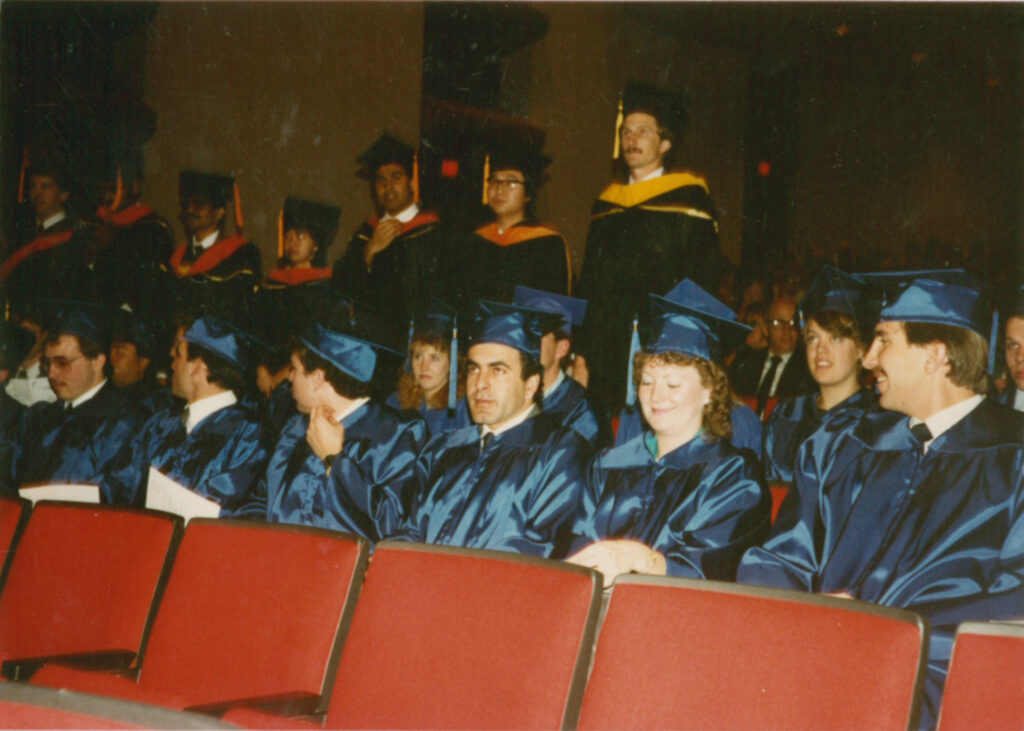
Problems in the Middle-East kept him from getting too comfortable in America. The Israelis would not renew his passport, so Hani went to Toronto, Canada so as not to be deported while his homeland worked out their problems. When he was finally able to return to the US, he got off the bus with $1.25 in his pocket. He started driving cab in Chicago and went back to School of Mines and earned his degree in Civil Engineering. He went to California for a while for a Civil Engineering job. Then at 27, he returned to Rapid City, his life more on course, and began to teach at his alma mater.
He met his wife Barbara during this time, and they married in 1991. One wonders how a Nebraska family reacted to their daughter’s boyfriend from Palestine with the olive skin? Hani laughs, “It took her Dad and brothers sometime to warm up to me, but we get along very well.”
He took a part-time consulting job with Banner Associates and continued to teach. After several months he was doing more consulting than teaching and was then hired as an engineer for the City of Rapid City. He worked for the City for seven years.
When his wife Barbara gave birth to their adorable twins, son Sharaf and daughter Yasmeen, Hani decided to stay home to help with the babies and work from his home office. After two months, Barb told him to find an office and that she would handle the children. But she couldn’t handle him AND the kids in the house.
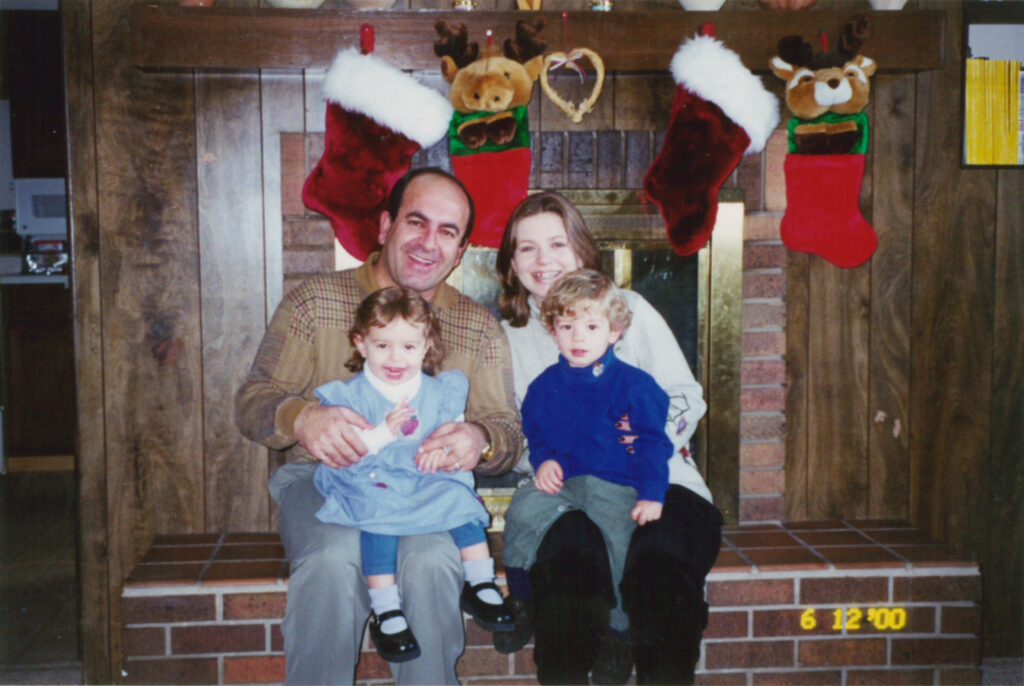
Business-minded Hani struck out on his own. When he speaks about his first projects, you would think he was talking about his first date. His face transforms into a warm nostalgic look as he speaks of putting his first project together with Don Wieseler, Jim Meier, Dan O’Brien and Doyle Estes on projects such as the Saw Mill in Hill City, Omaha Plaza, Office Depot, Big Sky, Red Rocks Estates and several others.
From that time on the projects came in quickly. He bought some land to develop into apartment complex near Valley View School. He bid out the construction, and when the bids all came back too high, he bought his own construction equipment and finished the job himself.
Hani was in the development game for real and he took to it easily. Hani is the kind of person who sees a field and turns it into a thriving neighborhood, business center or industrial park. He loves all his projects for different reasons. Red Rocks had many challenges. He liked the trials of getting a job done right, even if the topography didn’t cooperate. At Elks Country Estates, two partners were locked in disagreement on the project. Hani was brought in as a consultant. He later became a partner in the project to get it moving along with the Minnesota Street extension. Once again, this is Hani’s idea of a good time. “You have a problem that needs a solution, when you figure it out, that is the joy of it.”
Recently, Hani has turned his attention to integrating his love of development with his family’s tradition of giving back to the community. Most of us have seen his Dream Design logo on many local organizations’ wall of donors or under recognition signage at events. He is known in the community for his giving spirit. He says he can tell if the person is asking for help from their heart, and he will donate generously to the cause. But, if you appear disingenuous, “I won’t give one penny.” He said, “Not one.”
A year ago, he decided to take his donations to a different level. Bruce Long Fox of Rural America Initiatives was in desperate need of land for a facility for RAI Head Start and Early Head Start Programs. Long Fox needed to find a buildable lot by April 1 of 2017 or he would lose a $480,000 grant given specifically for a land purchase.
Hani said he would help. He has a plot of land in Rapid Valley that was appraised at 1.3 million. Long Fox said that he didn’t have that kind of money. Hani said, “If that is the most you can afford, we will make it happen.”
He had effectively saved the project and donated more than $500,000 dollars in land to the school project. “My friends thought I was crazy. As you grow older, you learn. My grandmother cooked for homeless refugees. My grandparents taught me that since the war of ’48, when a wave of refugees swept through the Gaza Strip never stopped, you open your house to the less fortunate.” Hani said, “I came here with very little and never expected to do this well. It doesn’t matter what you have or what you don’t, you have to share with your neighbor.”
Hani and his partners also donated land for the hospital expansion in the Buffalo Crossing Development on Hwy 16. That property is valued at approximately 1 million dollars. Once again, Hani goes back to his family and his upbringing. Why would a Palestinian-born, Muslim-raised man, give this much to his community? Hani replied, “My parents taught me that giving back is a Muslim tradition, but more importantly, it is a way of life.”
There is an old saying, you can never go home again. Hani is lucky in a way. He can go home again. It is not always the place of quiet security that most people want for their parents and family, but it is still his home. He loves his home and loves to tell people about his family compound. He describes a bucolic farm scene at the same time relating several stories of gun violence impacting his relatives.
About 14 years ago, Hani was watching CNN news and saw that there was a gun battle on the Gaza Strip. Concerned, he called his father. He asked his dad what was going on, and his dad was unruffled as he told him that a gun battle had broken out in their front yard during his sister’s engagement party the day before. The party was in their front courtyard, and they had to stop the party. During the violence, his brother caught a bullet in the hand of four Israeli soldiers who died fighting in his old neighborhood. While on the phone with his father, an aunt stopped by to say that a body had been found on their land by the pump house, so his dad had to cut the conversation short and check out the situation.
It is not rare that gunfire cuts through the neighborhood. During one round of violence, his sister called to tell him that a bullet had come through her window and had lodged in her refrigerator. In 2007, after a family visit, a bomb was dropped into their family courtyard and exploded. The room he was sleeping in the previous night was riddled with shrapnel. To paraphrase Stephen Foster, be it ever so volatile, there’s no place like home.
There are very real and tragic consequences for the people who choose life on the Gaza Strip. His nephew and a cousin were walking home one night after visiting their grandfather at the Shafai compound. They were fired upon by a drone, and his nephew died from the shots.
Meanwhile back in Rapid City and feeling blessed, Hani continues to support many of the non-profits with generous donations of cash and land. Hani has watched his adopted home struggle with the transient populations who often suffer from addiction and mental illness. He has been working with the Collective Impact group using that NAU site for the shelter. Hani currently owns the property. Although a permanent site has not been selected, Hani has pledged his financial support.
Hani knows how to build just about anything, however, one of the most difficult is to construct a bridge between cultures. This fact is not lost on Hani; he has straddled cultures for his entire life. But even he realizes there are some cultural divides that cannot be crossed – like the time his friends asked him, “Why do you only have one wife?” Hani chuckles when he tells this story, knowing that some building projects take a very, very long time to complete.

